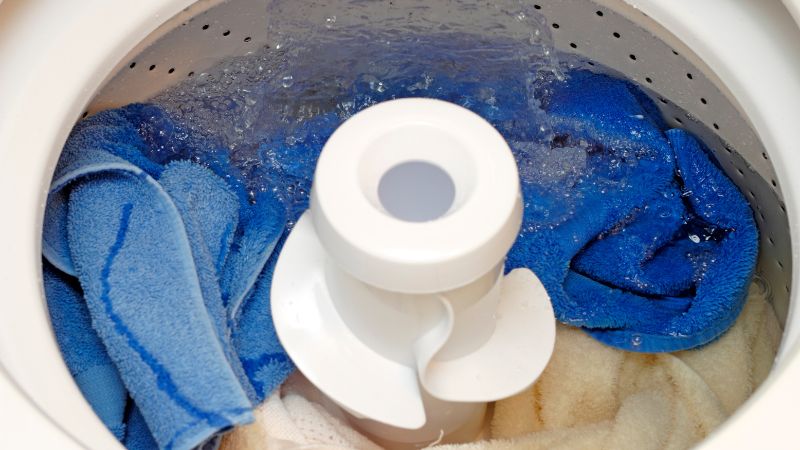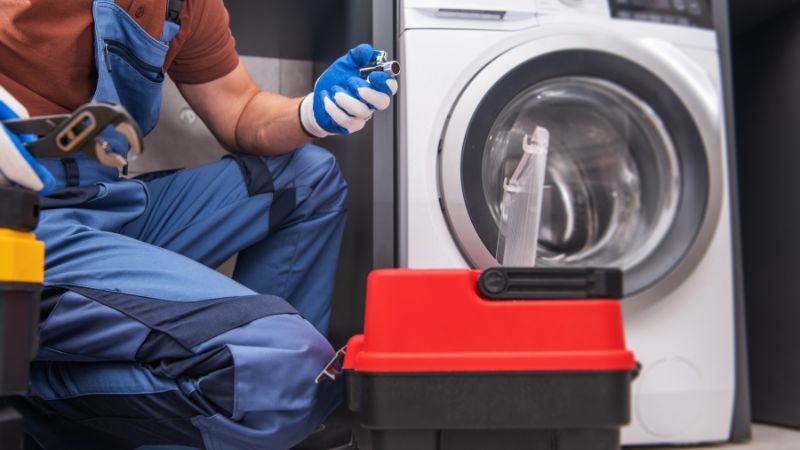Nowadays, washing machines have replaced manual labor, saving both physical effort and time for busy individuals. However, these appliances can sometimes malfunction, and one common issue is the washing machine not filling with water. So, what should you do when faced with this problem? In this article, we’ll explore the reasons behind this issue and provide simple solutions to get your washing machine running smoothly again.
1 Reasons Why Your Washing Machine Is Not Filling With Water
Low Water Pressure
One reason your washing machine may not be filling with water is low water pressure. If your water tank is too far from the washing machine, it can cause low water pressure and impact the machine’s performance.
Weak Water Source
A weak water source could be another reason for your washing machine not filling with water. During peak hours, high water usage may lead to a weak water supply, resulting in an insufficient amount of water in the tank to operate the machine properly. This, in turn, affects the water flow into the machine.
 Reasons for Washing Machine Not Filling With Water
Reasons for Washing Machine Not Filling With Water
Water Inlet Valve Is Closed
A closed water inlet valve could be the culprit behind your washing machine’s water woes. If you’re experiencing this issue, check the valve to ensure it’s open and allowing water to flow into the machine.
Clogged or Damaged Inlet Filter
Washing machines have an inlet filter located between the machine and the water inlet valve. Over time, this filter can become clogged with dirt and debris, blocking the water flow. It’s important to regularly clean or replace the filter to ensure smooth water circulation.
Faulty Control Board
A faulty control board is another potential reason for your washing machine not filling with water. The control board is responsible for managing the machine’s functions, and a malfunction in this component can be challenging to repair.
2 Solutions to Fix Your Washing Machine Not Filling With Water
Clean and Inspect Water-Related Components
To address the issue of your washing machine not filling with water, start by cleaning and inspecting all water-related parts. If the drain valve is damaged, remove and replace it, or thoroughly clean it if you’re comfortable doing so. Otherwise, contact a professional technician for assistance.
 Solutions to Fix Your Washing Machine Not Filling With Water
Solutions to Fix Your Washing Machine Not Filling With Water
Check and Fix Issues in the Washing Machine’s Control System
It’s important to inspect and fix any problems within the control system of your washing machine. The electronic control board plays a crucial role in the machine’s operation, so if there’s an issue, it’s best to consult a technician to avoid further damage.
Maintain and Repair the Water Pipes in Your Washing Machine
To resolve the issue of your washing machine not filling with water, ensure the water pipes are properly maintained and repaired. If the machine is not draining water due to incorrect pipe placement, adjust the pipes according to the user manual and the initial installation instructions.
Now you know the common reasons why your washing machine may not be filling with water and some simple solutions to fix it. We hope this article has empowered you with the knowledge to tackle this issue and enhance your washing machine maintenance skills.
How to Prevent and Fix Washing Machine Problems: 16 Common Mistakes and Solutions
Do you want to make laundry faster and easier in your household? Don’t worry, Dien May Xanh is here to help! Discover 16 of the most frequent washing machine errors and how to fix them so you can enjoy the laundry hassle-free!

























 Solutions
Solutions





